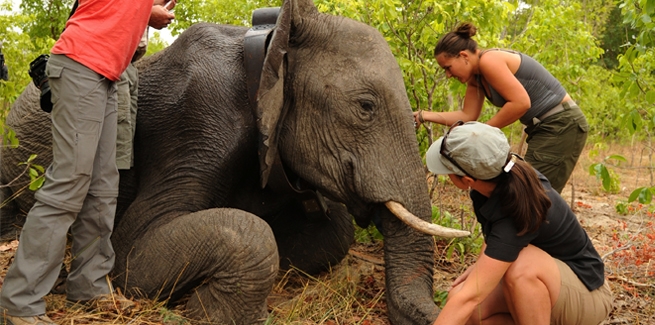Endotracheal tubes for elephants: A Project V.E.T.S. story

Every couple of months, the staff at AAHA-accredited Veterinary Center of Parker (VCP) in Parker, Colorado, sterilizes a couple of dozen used single-use, disposable endotracheal (ET) tubes and hands them over to Project V.E.T.S.
To be used again.
Yes, It’s an AAHA best practice that single-use, disposable endotracheal tubes be thrown away, not recycled, but that standard doesn’t apply to Project V.E.T.S.
A Boulder, Colorado–based nonprofit, Project V.E.T.S. collects donated veterinary equipment, technology, and supplies (hence the acronym V.E.T.S.) from veterinary hospitals and colleges, human hospitals, medical equipment and supply manufacturers, other nonprofits, and individuals. They redistribute these donations globally to 100 nonprofits devoted to animal health, most of which are in third-world countries.
“Project V.E.T.S. works with organizations literally all over the world,” says Heather Allman, CVT. Allman is VCP’s marketing and creative director. Recycling the ET tubes was her idea.
“Our ET tubes are single use and we were literally just throwing them away.” Allman had heard that Project V.E.T.S. was seeking donations, “and I thought these would be perfect.”
“They have an elephant sanctuary in the middle of Kenya [that] can’t really afford to buy [veterinary supplies like ET tubes]. So if we’re able to take our single-use ET tubes that we were going to throw away and give them to Project V.E.T.S., they can distribute them to [hospitals in] other countries that aren’t able to do [AAHA] best practices or can’t afford to.”
Given that the average hospital stocks ET tubes from 3.5 to 11 millimeters and an elephant requires a 45-millimeter tube, it’s unlikely that VCP would have one that size to donate, but Allman’s point is taken and her enthusiasm is contagious: Africa! Elephants!!
It’s one of the exciting aspects of donating supplies to Project V.E.T.S.: The items you might have otherwise thrown away get shipped to exotic places to help animals in need.
Founded in 2009 as one of the first organizations to send veterinary supplies and equipment to third-world countries, Project V.E.T.S. is still a grassroots effort all the way. It’s about spreading the word in the veterinary community and reaching out to hospitals: What supplies do they have that they don’t need? What can they spare?
A better question might be, “What does Project V.E.T.S. need?”
“Everything,” laughs Meghan Curtis, executive director of Project V.E.T.S. It was during a conversation last fall with Allman about different ways they could work together that Allman had her ET tube brainstorm.
Curtis seized on the idea: “They aren’t often donated and we can always use them.”
Marcy Thrash, Project V.E.T.S. program director, takes care of fulfillment. She talks to all 100 recipient organizations, keeping close track of their needs. Shipments always include the basics, such as bandages, syringes, gauze, surgical masks, and gloves. Sometimes there’ll be a one-off item, like an ultrasound machine, or the microscope that got donated three years ago and ended up at a clinic in Pakistan.
“The things that we need the most are surgical instruments,” Thrash says—forceps and hemostats in particular. “Those items can be sterilized and reused and our groups desperately, desperately need them.”
Although Project V.E.T.S. staff are happy to make the hour-long drive from their base in Boulder to VCP, most hospitals pay to ship donations to Project V.E.T.S. They, in turn, pay the shipping to their recipients. Every donor gets a tax letter; it’s all tax deductible. “All costs associated with mailing, including packaging, are tax deductible.”
Find out more about donating to Project V.E.T.S. here.
And if you happen to have a 45-millimeter ET tube laying around, be sure to mention it.
Photo Credit: © Project V.E.T.S.



